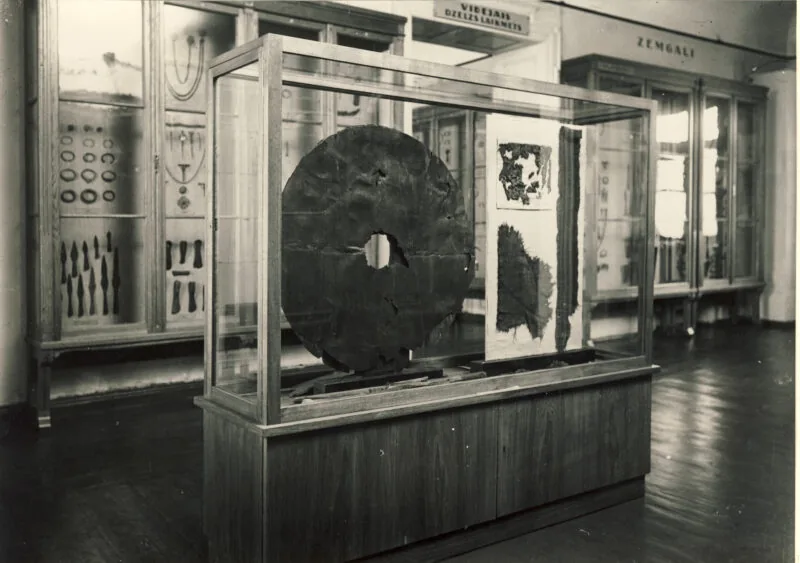Foundation and development of the State Historical Museum (1920–1940)
In 1919–1920, the new Latvian state established its national cultural institutions, including the State Archives, the State Library and museums. The former Riga Latvian Society Museum grew into the State (Latvian) Ethnographic Museum.
The State (Latvian) Ethnographic Museum was founded in early 1920 with the deposit of the RLS collection of some 12,000 items. The former RLS Museum curator, Matīss Siliņš (1861–1942), was appointed the director of the newly established institution. The Museum was given four rooms in Riga Castle, where the State Archives was already operating and, since spring 1920, also the State Art Museum.
In keeping with the Museum’s name, initially, the focus was on archaeological and ethnographic collections. In 1924, it was renamed the State Historical Museum, and a special law established its mission “to collect, preserve, exhibit and promote various cultural values of antiquity, as well as of more recent times that are of significance in the history of Latvia”. It has remained the core of the LNMH mission to the present day.
The typological diversity of the Museum’s collection gradually expanded, and as its administration was reformed in 1930, when three branches were created: Archaeology, Ethnography, and History and Numismatics Departments.
The Museum collaborated closely with the Monuments Board, whose archaeological excavations, expeditions and monument surveys resulted in the addition of tens of thousands of objects to the Museum’s collection, including the country’s most extensive collection of sacred art featuring church interior objects. By the end of the 1920s, the Museum’s collection numbered around 80,000 objects and by 1940, it had reached 150,000.
The permanent exhibition in Riga Castle was gradually expanded and modernised; by the late 1930s, the museum in its 17 exhibition halls provided extensive information on archaeology and ethnography, displayed church sculptures and a numismatic collection.
In the 1930s, as a new generation of specialists joined the Museum, research and international partnerships became more dynamic. The Museum’s researchers conducted archaeological excavations and produced publications, including the first catalogues and guidebooks. In 1930, during the 2nd Congress of Baltic Archaeologists, the Museum, together with Berlin, Königsberg, Stockholm, Helsinki, Tartu and Warsaw museums, organised a comprehensive exhibition on the prehistory of the Baltic peoples. The State Historical Museum co-organised the International Exhibition of Folklore and Primitive Art in Brussels (1929), the Exhibition of Latvian Crafts in Stockholm (1931), the Exhibition of Latvian Folk Art in Helsinki (1933), the Exhibition of Latvian Folk Art in Tallinn (1933), the Exhibition of Baltic Folk Art in Paris (1935), the Exhibition of Latvian Art in Paris and London (1939).
In the second half of the 1930s, the Jelgava, Cēsis and Daugavpils museums, as well as the Rundāle Palace, were added to the State Historical Museum as departments.
